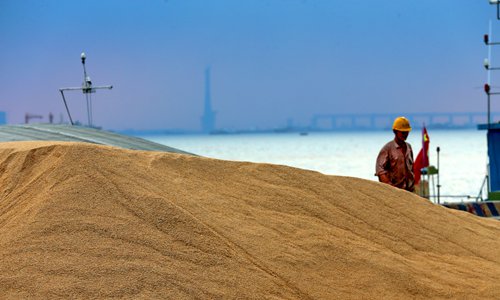China’s top agricultural authority on Sunday approved to import genetically modified (GM) soybean products developed by a Beijing-based company, which will be used for manufactured materials.
It is reportedly the first time that China has approved such a certificate, which had been in effect since June 11, and will be valid for five years. China does not allow GM soybeans to be planted domestically, but developing GM seeds and certain types of imported GM crops are allowed.
Developed by Da Bei Nong Group, a Beijing-based high-tech agricultural company, the GM soybean has been engineered to tolerate pesticides and herbicides.
In February 2019, the company’s GM soybean was approved for commercial cultivation in Argentina. Experts viewed this business model as one that could provide China an advantage over the US considering current trade tensions; that is, China imported 8 million tons of soybeans in July 2018, down 20.6 percent year-on-year after being faced with a growing “soybean standoff” with the US.
However, the GM soybean has not been growing in Argentina according to Argentine regulations, and therefore soybean varieties containing the technology can only be marketed commercially until they are licensed from China.
Meanwhile, according to China’s laws and regulations, those who export GM agricultural products to China should obtain the safety certificate issued by the Ministry of Agriculture and Rural Affairs of China.
China is a major importer of soybeans in the world, with more than 50 percent of domestic soybean consumption coming from South America, a major market for GM soybeans and technologies.
According to the latest data released by the International Agricultural Biotechnology Application Service, the planting area of soybeans in Argentina was 18 million hectares in 2018, all of which was GM soybeans, accounting for 18.8 percent of the global planting area.
Soybean farmers in Argentine are in urgent need of a new herbicide-tolerant soybean technology.
Imported soybeans seen at a port in Nantong, East China’s Jiangsu Province in August, 2018. Photo: IC



